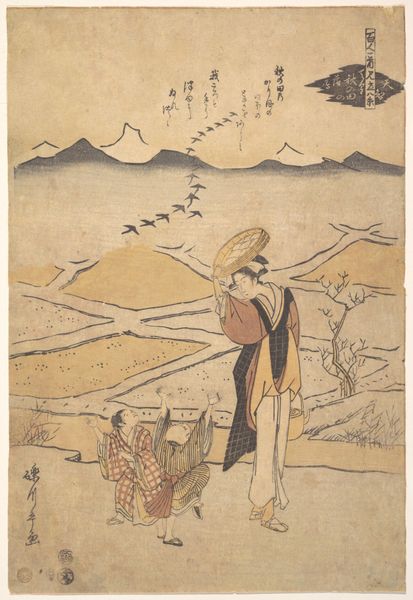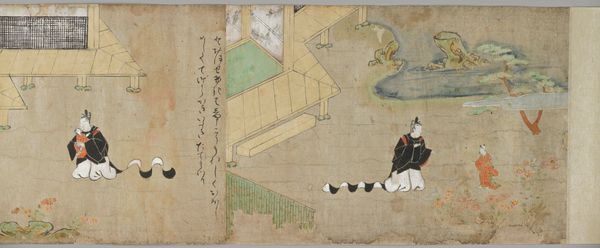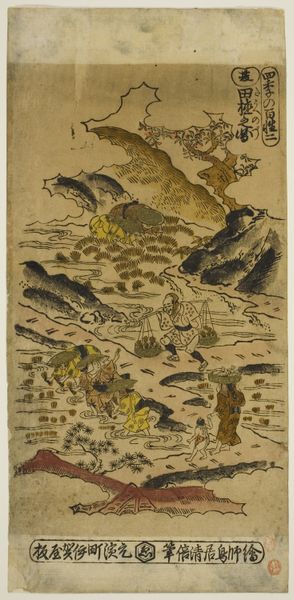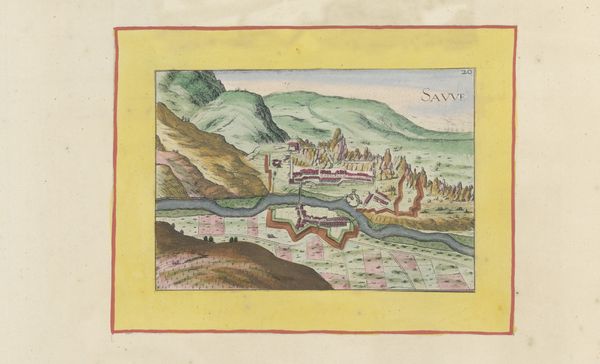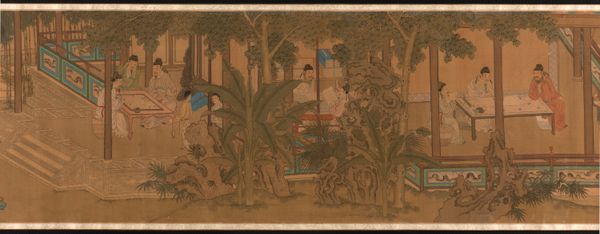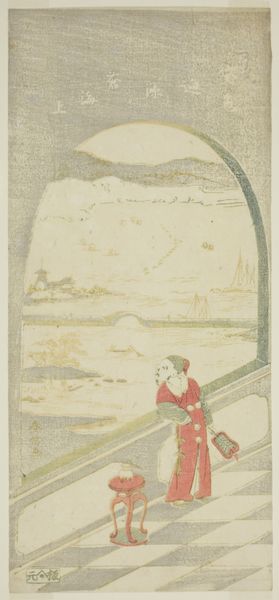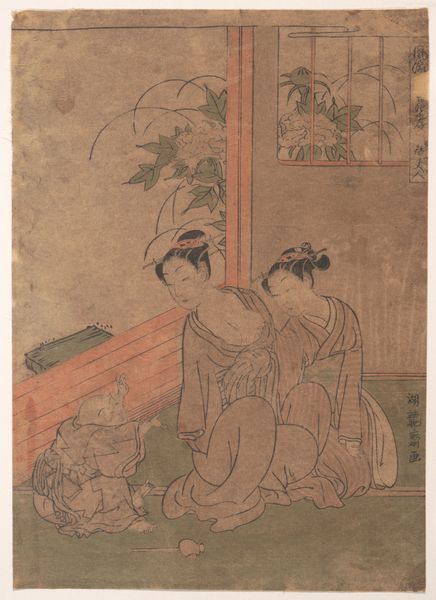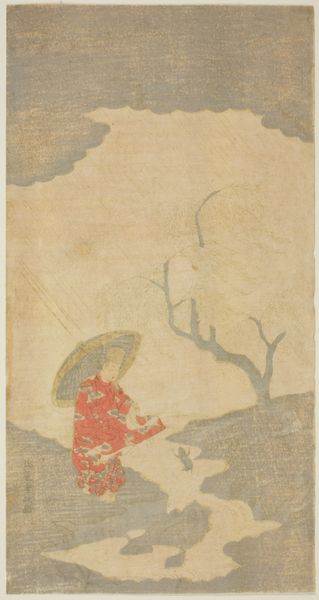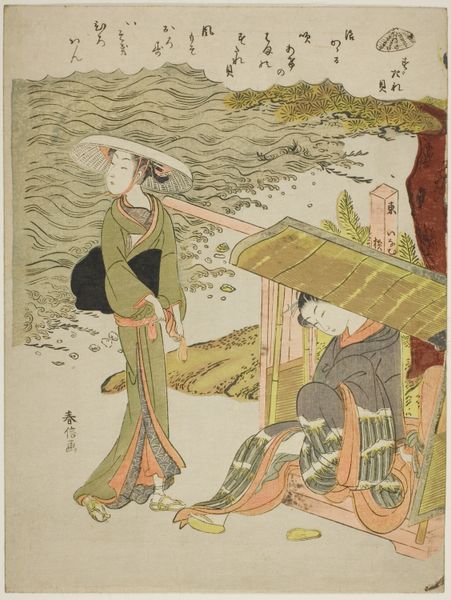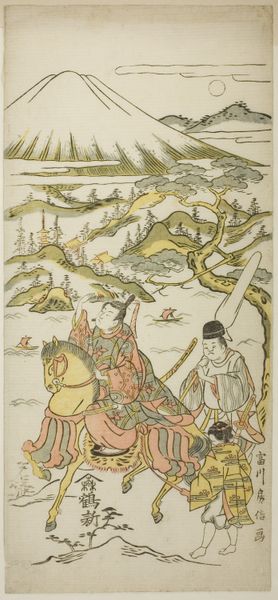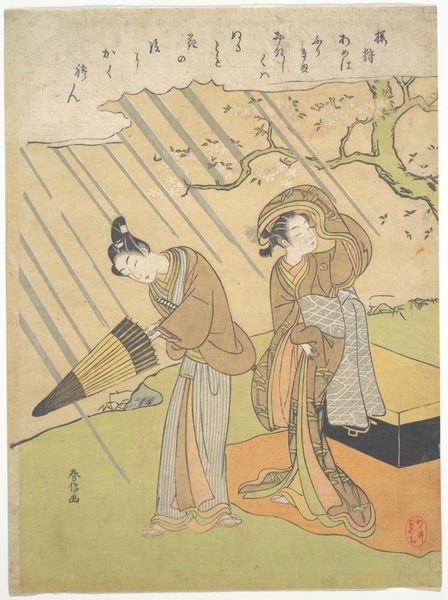
"How a Braggart was Drowned in a Well", Folio 33v from a Haft Paikar (Seven Portraits) of the Khamsa (Quintet) of Nizami of Ganja 1405 - 1455
0:00
0:00
painting, watercolor
#
water colours
#
painting
#
watercolor
#
coloured pencil
#
naive art
#
abstraction
#
men
#
islamic-art
#
history-painting
#
miniature
Dimensions: Painting: H. 8 7/8 in. (22.5 cm) W. 4 3/4 in. (12.1 cm) Page: H. 11in. (27.9 cm) W. 7 3/16 in. (18.3 cm) Mat: H. 19 1/4 in. (48.9 cm) W. 14 1/4 in. (36.2 cm)
Copyright: Public Domain
This painting illustrates "How a Braggart was Drowned in a Well," from Nizami’s Khamsa. Here, the well and the tree are powerful symbols. The well, a dark void, represents the depths of human folly and the inevitable consequence of hubris. The tree, towering above, may symbolize the natural order, indifferent to human affairs, or perhaps the tree of knowledge, reminding us of wisdom ignored. Consider the act of falling: From Icarus plummeting from the sky to the prideful man descending into the well, this motif appears across cultures. It speaks to our collective fear of failure and the limitations of human ambition. These images tap into the psyche, reminding us of our shared vulnerabilities and the timeless lessons embedded in the human experience. They stir within us a sense of caution, a recognition of the precarious balance between aspiration and downfall.
Comments
No comments
Be the first to comment and join the conversation on the ultimate creative platform.

